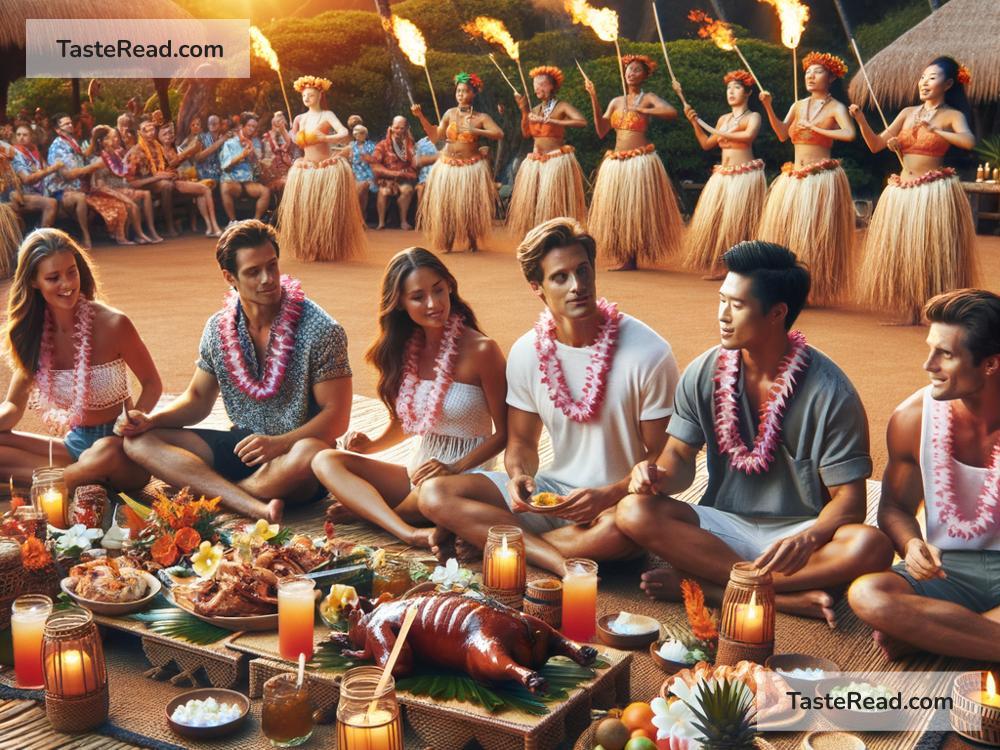The Cultural Significance of the Hawaiian Luau
When people think of Hawaii, they often imagine beautiful beaches, hula dancers, and delicious tropical meals. One of the most well-known Hawaiian traditions tied to this image is the luau—a festive gathering filled with food, music, and dance. But a luau is more than just fun and entertainment. It is a deeply rooted cultural celebration that tells the story of Hawaii’s history, traditions, and values. In this blog post, we’ll explore the origins, traditions, and cultural significance of the Hawaiian luau, using simple language to help everyone understand and appreciate this important event.
What Is a Luau?
A luau is a Hawaiian feast that brings people together to celebrate special occasions such as birthdays, weddings, or community events. It includes traditional food, music, dancing, and storytelling. Luaus are a way for Hawaiians to share their culture with others while also keeping connections with their own roots.
The word “luau” originally referred to one of the dishes served during these feasts: a popular mix of chicken or fish cooked with taro leaves and coconut milk. Today, however, the term has come to represent the event itself—a vibrant gathering filled with Hawaiian traditions.
How Did the Luau Begin?
The luau has a long history and traces back to ancient Hawaiian customs. In Hawaii’s early days, gatherings were an important part of life. Chiefs, families, and communities would come together to honor milestones like a baby’s birth, successful fishing trips, or victories in battle. These feasts weren’t just about eating—they were spiritual and cultural events that strengthened family bonds and celebrated the land’s abundance.
For much of Hawaiian history, men and women weren’t allowed to eat together due to religious restrictions. Food also carried special meanings, and certain dishes were reserved only for royal chiefs and high-ranking individuals. In 1819, King Kamehameha II made a significant change by eliminating these religious rules. He marked this shift by eating with women for the first time, a move that symbolized unity. From then on, communal feasts became the luaus we know today.
Traditional Foods at a Luau
Food plays a central role in a luau, and the dishes served pay tribute to Hawaii’s natural resources and cultural heritage. Some of the traditional foods you might find at a luau include:
-
Kalua Pig: This is the centerpiece of most luaus. The pig is cooked in an underground oven called an imu. Wrapped in banana leaves, it is slow-cooked for hours until the meat becomes tender and flavorful. The preparation of kalua pig is not only delicious but also reflects the Hawaiian connection to the land and nature.
-
Poi: Made from cooked and mashed taro root, poi is a staple of Hawaiian cuisine. It has a unique taste and is considered sacred in Hawaiian culture as it represents the life-giving taro plant.
-
Lomi Lomi Salmon: A refreshing dish made with salted salmon, tomatoes, and onions, served cold.
-
Haupia: A coconut pudding dessert that is always a favorite.
-
Laulau: Meat, usually pork or fish, wrapped in taro leaves and steamed, creating a flavorful and tender dish.
The food serves as a way to connect people with the earth and the ocean—the two key sources of sustenance for Hawaiians.
Music and Dance
Alongside the food, music and dance are essential to a luau’s festive atmosphere. The hula is perhaps the most famous part of a luau. This traditional Hawaiian dance tells stories about the gods, nature, and the community. It combines graceful hand movements and rhythmic hip motions to convey emotions and narratives.
Musicians at a luau often play instruments such as the ukulele, guitar, or drums. Traditional Hawaiian chants, called mele, add a spiritual and historical element to the celebration. Together, the music and dance aren’t just entertainment—they’re a tribute to Hawaiian culture and storytelling.
The Values Behind the Luau
Beyond the food and dancing, the luau represents key Hawaiian values that remain important today. One such value is aloha, which means love, kindness, and compassion. Luaus bring people together to share joy, food, and fellowship, embodying the spirit of aloha.
Another value is ohana, which means family. This concept goes beyond blood relations and includes friends and community members. A luau is a celebration of togetherness and connection, reminding everyone of the importance of relationships.
A luau also highlights Hawaiians’ respect for nature. From the food prepared using local ingredients to the storytelling about the land and ocean, luaus portray the deep bond Hawaiians have with their surroundings.
Modern Luaus
Today, luaus are held all over Hawaii, catering both to locals and visitors. Many hotels and resorts host luaus so tourists can experience Hawaiian culture firsthand. While modern luaus may have added some elements for show, they still hold onto many traditional aspects, such as kalua pig, hula dancing, and live music.
Hosting or attending a luau is more than just a social gathering—it’s an opportunity to honor Hawaiian culture, history, and traditions. Through food, music, and dance, the luau tells stories of the past, celebrates the present, and welcomes the future—all while bringing people closer together.
Conclusion
The Hawaiian luau is not just a party or a tourist attraction—it’s a meaningful celebration that carries the values and traditions of Hawaiian culture. From its ancient roots to its modern-day gatherings, the luau reflects the spirit of aloha, the importance of family, and a deep respect for nature. Whether you attend a luau as a visitor or host one for a special occasion, it’s an unforgettable experience that immerses you in the heart of Hawaii’s rich heritage.


